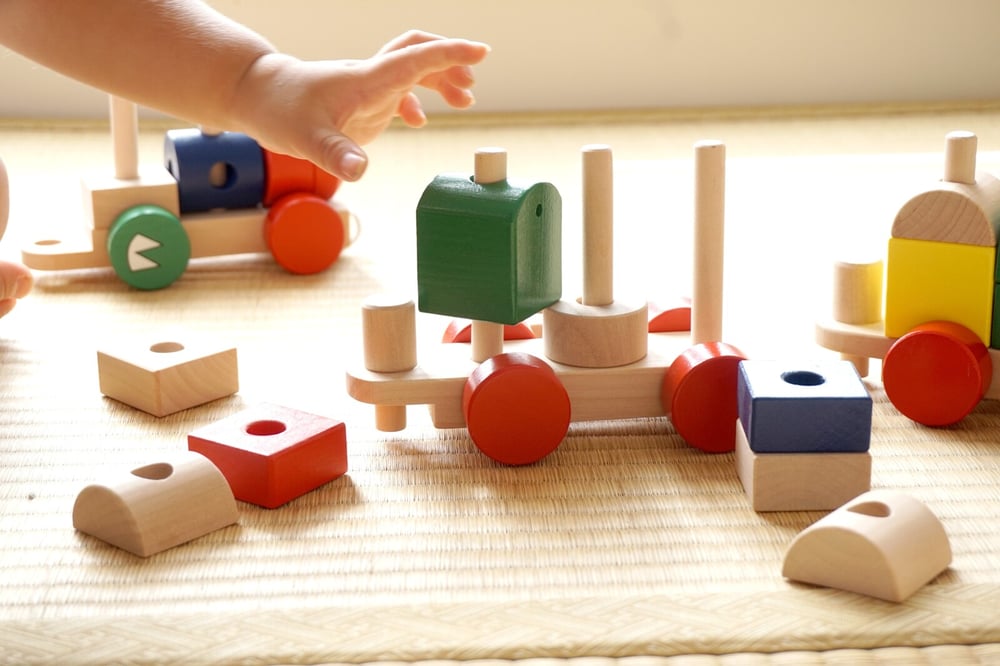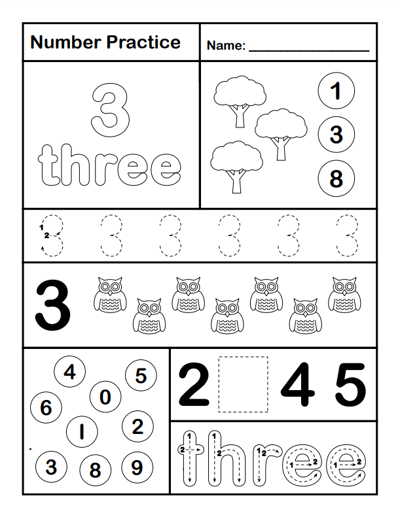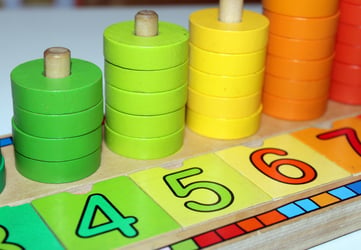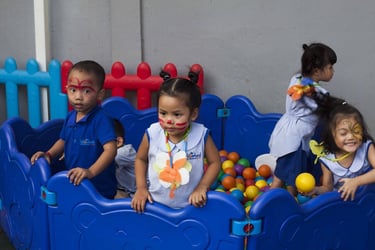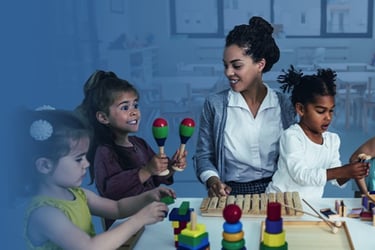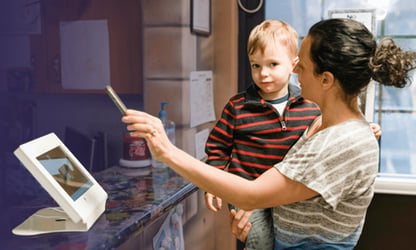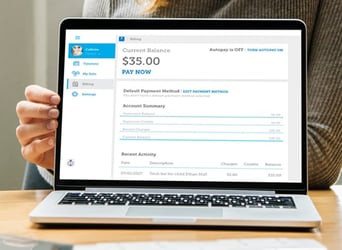Fun and Effective Activities to Teach One-to-One Correspondence to Preschoolers
One-to-one correspondence occurs when each item in a group is paired with one specific item in a different group. When we talk about one-to-one correspondence activities for preschool children, we're referring to fun activities that help kids count accurately and efficiently. This is an essential skill that children need to master early on to succeed in math and other subjects.
Teaching one-to-one correspondence is one of the best ways to teach kids to count numbers in order to 10, by assigning one number to each item in a group and helping children label each one as they start counting. It's an important skill to develop as part of early math because children will use one-to-one correspondence throughout their school years. There are plenty of different ways to teach one-to-one correspondence activities for preschoolers, but it's important for children to count accurately and confidently. In this guide, we'll explore several of the best ideas for teaching one-to-one correspondence activities for preschoolers. Learn how to teach one-to-one correspondence today!
Table of Contents
What Is an Example of One-to-One Correspondence?
How Do You Teach Preschoolers About One-to-One Correspondence?
Engaging Activities for Teaching One-to-One Correspondence
- Using Counting Mats for One-to-One Correspondence
- Ice Cream Counting: A Delicious Way to Learn
- Fun Math Activities to Develop Correspondence Skills
- Incorporating Dot Activities for Counting Practice
- Using Beads and Dice for Interactive Learning
- Mathematical Games to Strengthen One-to-One Correspondence Skills
- Interactive Worksheets for Reinforcing Corresponding Numbers
- Interactive Counting Activities
- Make Counting Fun with Pipe Cleaners
- Using M&Ms to Make Counting Sweet
- Build an Exciting Lesson with LEGOs
What Is an Example of One-to-One Correspondence?
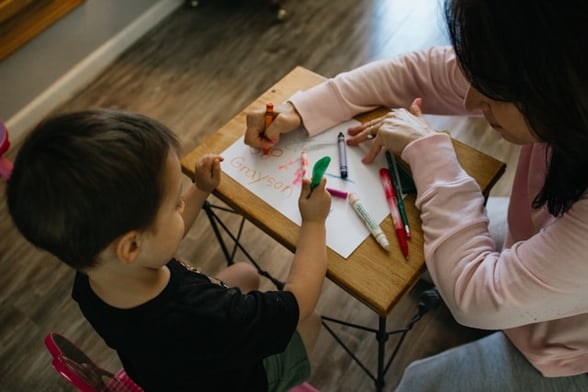
One-to-one correspondence counting is when children are asked to count to 10 by placing one object on each number from 1 to 10. This can be done using hands-on games and activities such as using LEGOs, popsicle sticks or even ice cubes. By engaging in these simple activities, children can develop one-to-one correspondence while also working on their fine motor skills. These hands-on activities help develop one-to-one correspondence and improve number sense in children at the beginning of the year.
How Do You Teach Preschoolers About One-to-One Correspondence?
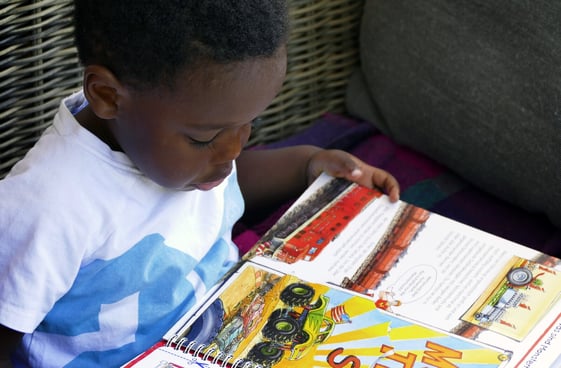
Teaching preschoolers about one-to-one correspondence can be super fun and easy. One way to do it is by having them practice one-to-one correspondence with objects like LEGOs or beads. You can have them line up the beads in order, one at a time, while they recite numbers in a fun way. Another idea is to use pipe cleaners and beads to help them learn one-to-one correspondence by counting and stringing the correct number of beads onto each pipe cleaner. It's a great way to make counting skills more interactive and engaging, beyond just a rote count!
It's important for children to understand the concept of one-to-one correspondence because it's a crucial math skill that forms the foundation for teaching counting. By teaching students this concept, you're helping them learn how a number corresponds to a specific object in a set. So next time you're snacking on crackers with your students, why not ask them to count out the correct number of crackers? It's a simple yet effective way to reinforce the idea that one-to-one correspondence is an important skill,
Engaging Activities for Teaching One-to-One Correspondence
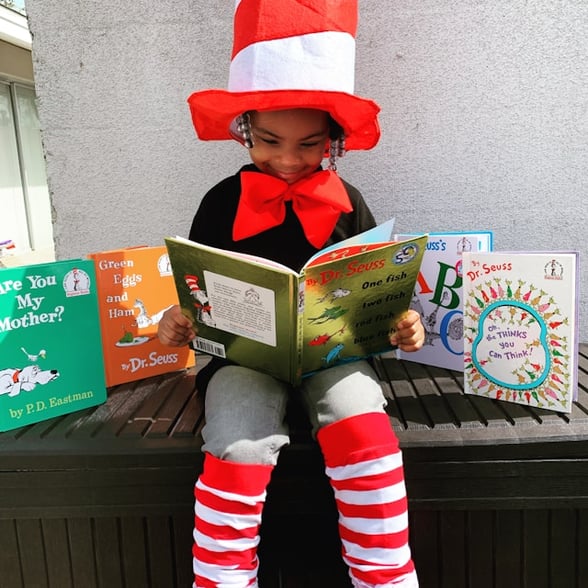
Using Counting Mats for One-to-One Correspondence
1. Vehicle Counting Mat Adventure
Overview: Kids match the number of vehicles to the numbers on their mats.
Materials Needed: Vehicle counting mats, vehicle cutouts
Setup:
- Print out or create vehicle counting mats with numbers 1 through 10 on them.
- Cut out vehicle shapes in different colors and types (cars, trucks, buses, etc.) for the kids to use as counters.
Instructions:
- Give each child a vehicle counting mat and a set of vehicle cutouts.
- Have the children count the number on each parking space and match the correct number of vehicles to that space.
- Encourage the children to count out loud as they place the vehicles on the mat.
- Once all the mats are filled with the correct number of vehicles, discuss the different types of vehicles and colors with the children.
- For an added challenge, mix up the vehicle cutouts and have the children sort them by type as they count them out.
Variations:
- Use different types of counters, such as animal shapes or building blocks, instead of vehicles.
- Create mats with larger numbers for older children who are learning to count to higher numbers.
- Have the children create their own vehicle counting mats with different numbers and types of vehicles.
2. Animal Habitat Counting
Overview: Match animals to their habitats using counting mats.
Materials Needed: Counting mats with habitats, animal cutouts
Setup:
- Print out or create counting mats with different habitats such as jungle, ocean, desert and forest.
- Cut out animal shapes or use animal toys to represent the animals that live in each habitat.
- Place the counting mats and animal cutouts on a flat surface for easy access.
Instructions:
- Choose a counting mat with a specific habitat and place it in front of the child.
- Ask the child to count the number of animals on the mat and then place the corresponding number of animal cutouts on the mat.
- Encourage the child to name each animal as they place it on the mat, discussing where it lives and why it belongs in that specific habitat.
- Repeat the process with the other counting mats and animal cutouts to explore different habitats and practice counting skills.
Variations:
- Animal sorting: Have children sort the animals by habitat and place them in the correct spots on the mat.
- Habitat matching: Use different habitats on each mat and have children match the animals to their correct habitats.
- Animal counting: Have children count the total number of animals on each mat and write the number in the designated space.
- Habitat discussion: As children place the animals on the mats, discuss with them the characteristics of each habitat and why certain animals live there.
- Additional math activities: Use the counting mats to practice addition and subtraction by adding or removing animals from the habitats.
3. Flower Garden Counting Mat
Overview: Use a garden-themed mat to count and place the correct number of flowers.
Instructions: Identify the number on each garden plot and place the corresponding number of flowers.
Materials Needed: Garden counting mats, flower cutouts
Setup:
- Print out or create garden counting mats with numbered garden plots (e.g., 1-5, 6-10, etc.).
- Cut out flower shapes from colored paper or use flower stickers.
Instructions:
- Look at the number on each garden plot.
- Place the corresponding number of flowers on each garden plot.
- For example, if the garden plot is numbered 3, place 3 flowers on that plot.
- Continue this process for each garden plot, matching the number of flowers to the number on the plot.
- Discuss the concept of counting and matching numbers with the child as they place the flowers on the garden plots.
- Encourage the child to count out loud as they place each flower on the garden plot.
- Have fun exploring numbers and counting while creating a colorful garden scene!
Variations:
- Use different types of flowers for each garden plot to add variety and interest.
- Have children practice counting in different languages by labeling the garden plots with numbers in a different language.
- Add a challenge by having children count backwards from a larger number to zero and place the correct number of flowers on the mat.
- For older children, use larger numbers on the garden plots to practice counting and placing a higher quantity of flowers.
4. Space Counting Mat
Overview: Use a space-themed counting mat to help children learn one-to-one correspondence by placing the correct number of space objects on each section.
Materials Needed: Space-themed counting mats, star and planet cutouts
Setup:
- Provide each child with a space-themed counting mat and a set of star and planet cutouts.
- Arrange a flat surface where children can place their mats and cutouts.
Instructions:
- Distribute space-themed counting mats to each child, featuring different sections with numbers.
- Provide children with cutouts of stars, planets or other space objects.
- Instruct the children to count and place the corresponding number of space objects on each numbered section of the mat.
- Encourage children to discuss the objects they are using, enhancing their vocabulary related to space.
Variations:
- Introduce different celestial bodies for advanced learning.
- Use glow-in-the-dark cutouts for a fun twist and to discuss day and night concepts.
5. Bug Collection Counting
Overview: Children use bug jar counting mats to practice one-to-one correspondence by matching the number of bug cutouts to the numbers on the jars.
Materials Needed: Counting mats with bug jars, bug cutouts
Setup:
- Distribute bug jar counting mats and bug cutouts or toys to each child.
- Ensure there's a clear workspace for children to arrange their mats and cutouts.
Instructions:
- Provide each child with a bug jar counting mat that has different numbers on each jar.
- Give the children a variety of bug cutouts.
- Ask the children to count and place the correct number of bugs into each jar on the mat.
- Engage the children in talking about the types of bugs they're using, fostering curiosity about the natural world.
Variations:
- Include real-life bug observations where possible.
- Use the activity to introduce basic addition or subtraction by adding or removing bugs from the jars.
6. Fruit Basket Counting Mat
Overview: Use fruit-themed mats to teach preschoolers one-to-one correspondence, matching the number of fruit pieces to the numerals on the mat.
Materials Needed: Counting mats with fruit baskets, fruit cutouts
Setup:
- Prepare fruit basket counting mats and fruit cutouts or toys.
- Set up a designated area where children can work with their mats and fruit pieces.
Instructions:
- Set up the counting mats, each with a numbered fruit basket.
- Provide various fruit cutouts or toys to the children.
- Instruct the children to count out and place the corresponding number of fruit pieces in each basket.
- Encourage discussion about the fruits, promoting healthy eating habits alongside counting skills.
Variations:
- Introduce exotic fruits to expand knowledge.
- Use the mats for simple addition or subtraction exercises.
Ice Cream Counting: A Delicious Way to Learn
7. Ice Cream Scoop Counting
Overview: Children stack the correct number of ice cream scoop cutouts on cones labeled with numerals to learn one-to-one correspondence.
Materials Needed: Ice cream cone cutouts, scoop cutouts
Setup:
- Hand out ice cream cone cutouts and a variety of scoop cutouts to each child.
- Provide a space where children can easily assemble their ice cream cones.
Instructions:
- Give each child a set of cones labeled with numbers and various ice cream scoop cutouts.
- Children count and stack the corresponding number of scoops on each cone.
- Facilitate discussions about flavors, colors and numbers, making the activity a multisensory experience.
Variations:
- Introduce pattern recognition by having children follow color patterns when stacking scoops.
- Discuss concepts of more and less by comparing stacked scoops.
8. Ice Cream Flavor Matching
Overview: This activity combines color recognition with counting as preschoolers match ice cream scoop colors to the numbered cones.
Materials Needed: Colored scoop cutouts, cone cutouts with numbers
Setup:
- Give each child a set of colored ice cream scoop cutouts and cone cutouts with numbers.
- Ensure there's enough space for children to match and place their scoops on cones.
Instructions:
- Provide children with cone cutouts, each labeled with a number and a color.
- Give them scoops in various colors and instruct them to match the scoops to the cones based on both color and number.
- Encourage children to verbalize the color and number as they match them, enhancing both counting and color recognition skills.
Variations:
- Introduce flavor names to associate colors with specific tastes.
- For a group activity, have children work together to match scoops on larger cone cutouts.
9. Ice Cream Pattern Making
Overview: Use this activity to teach preschoolers about patterns and sequences along with one-to-one correspondence, using colored ice cream scoops.
Materials Needed: Colored ice cream scoop cutouts, cone cutouts
Setup:
- Provide colored ice cream scoop cutouts and cone cutouts for pattern creation.
- Set up a workspace for children to lay out their patterns.
Instructions:
- Present children with cone cutouts and colored scoop cutouts.
- Show them a pattern sequence and ask them to replicate it on their cones, ensuring the number of scoops matches the cone's number.
- Discuss the patterns and ask children to create their own, fostering creativity and understanding of sequences.
Variations:
- Use the activity to introduce simple math concepts, like addition, by combining scoops.
- Encourage storytelling by having kids invent stories about their ice cream creations.
Fun Math Activities to Develop Correspondence Skills
Whether you're looking for preschool math worksheets or for some fun math activity ideas, we've got you covered. Scroll through the ideas or click to download our free resource pack.
Five Exciting Worksheets Inside!
10. Numbered Balloon Pop
Overview: Engage preschoolers in a fun, active game where they pop balloons to learn numbers and counting.
Materials Needed: Balloons, confetti or small paper dots, numbers
Setup:
- Prepare balloons with numbers and corresponding confetti or paper dots inside.
- Set up an open space where children can safely pop the balloons.
Instructions:
- Inflate balloons with a small number of confetti pieces inside, matching the number written on the balloon.
- Children pop the balloons and count the confetti pieces, matching them to the balloon's number.
- Turn it into a movement activity, encouraging kids to jump or stomp to pop the balloons.
Variations:
- Use different colored balloons for sorting and counting activities.
- Integrate simple math by having children combine confetti from two balloons and count the total.
11. Caterpillar Segment Counting
Overview: Children create a colorful caterpillar, learning one-to-one correspondence by matching numbered segments.
Materials Needed: Numbered segment cutouts or blocks
Setup:
- Provide numbered segment cutouts or blocks to create caterpillars.
- Ensure there's a flat surface for children to assemble their caterpillar segments.
Instructions:
- Provide children with cutouts or blocks that represent different segments of a caterpillar, each with a number.
- Children build their caterpillar by connecting the segments in numerical order, matching one segment to one number.
- Ask children to count out loud as they add each segment, reinforcing their understanding of numbers.
Variations:
- Introduce simple addition or subtraction by adding or removing segments from the caterpillar.
- Use the activity to discuss the life cycle of a butterfly, adding an element of science education.
12. Playdough Counting
Overview: Preschoolers use playdough to reinforce one-to-one correspondence, creating a tactile and interactive counting experience.
Materials Needed: Playdough, number cards
Setup:
- Distribute playdough and number cards to each child.
- Arrange a clean, flat surface for children to work with their playdough.
Instructions:
- Children roll playdough into balls, one for each number on their card, practicing one-to-one correspondence.
- They place the correct number of playdough balls on a card or mat that displays a number.
- Engage the children in a conversation about the colors and textures they are experiencing, adding sensory elements to the learning.
Variations:
- Introduce shape-making with playdough to combine counting with shape recognition.
- Have children create simple playdough figures and count various features (e.g., eyes, limbs) to integrate counting with anatomy or character design.
13. Counting Nature Items
Overview: A nature-based activity where children collect and count natural items, linking one-to-one correspondence with environmental awareness.
Materials Needed: Natural items (leaves, sticks, stones), number cards
Setup:
- Collect natural items and prepare number cards for counting.
- Set up an outdoor or indoor space where children can sort and count their items.
Instructions:
- Children collect natural items and then match the number they've collected with the number on their card.
- This activity not only teaches counting, but also encourages children to explore and appreciate their natural environment.
- Discuss the items collected, touching on aspects of nature, seasons or plant and animal life.
Variations:
- Turn the activity into a scavenger hunt, where children have to find a specific number of natural items.
- Incorporate sorting by having children categorize their items by type or color after counting.
14. Numbered Pinwheel Making
Overview: Children craft pinwheels, applying one-to-one correspondence by adding a specific number of decorative elements based on the number displayed on the pinwheel.
Materials Needed: Pinwheel templates, stickers, markers
Setup:
- Hand out pinwheel templates, stickers and markers.
- Provide a space with a flat surface for children to decorate and assemble their pinwheels.
Instructions:
- Distribute pinwheel templates to children, each with a number indicating how many decorative elements to add.
- Kids decorate their pinwheels, counting out the correct number of stickers or marks to match the pinwheel's number.
- Once completed, discuss the designs and use the pinwheels in a practical setting, observing them spin in the wind.
Variations:
- Introduce patterns by having children follow a specific sequence of colors or shapes in their decorations.
- Use the pinwheels to discuss wind and weather, adding a science learning component.
15. Counting and Sorting Nature Items
Overview: This activity encourages children to engage with nature while practicing counting and sorting, enhancing their one-to-one correspondence skills.
Materials Needed: Nature items (e.g., leaves, stones, shells), containers with numbers
Setup:
- Prepare containers or mats with numbers for sorting natural items.
- Choose an outdoor area or set up an indoor space for children to sort and count items.
Instructions:
- Children collect various natural items during an outdoor activity.
- Back in the classroom or at home, they sort these items into containers, each labeled with a number, matching the quantity of items to the container's number.
- This activity not only reinforces counting skills, but also introduces basic sorting and categorization.
Variations:
- Have children sort items by color, size or type after counting, introducing additional classification skills.
- Use the sorted items to create nature-based art, linking math with creativity.
Using Beads and Dice for Interactive Learning
16. Bead and String Patterns
Overview: Children use beads and strings to create patterns, practicing one-to-one correspondence by matching bead counts to numbers.
Materials Needed: Beads, strings, number cards
Setup:
- Distribute beads, strings and number cards to each child.
- Ensure there's adequate space for children to string their beads and lay out patterns.
Instructions:
- Kids choose a number card and then string the corresponding number of beads onto their string, focusing on one-to-one correspondence.
- Encourage children to create patterns with the beads, enhancing their pattern recognition and sequencing skills.
- Discuss the patterns and the numbers, reinforcing numerical understanding and color recognition.
Variations:
- Introduce more complex patterns or sequences for children to replicate with the beads.
- Use the activity to create jewelry or decorations, adding a sense of accomplishment and purpose to the task.
17. Dice and Cupcake Liner Counting
Overview: A simple, yet effective game using dice and cupcake liners to teach children one-to-one correspondence and basic counting.
Materials Needed: Dice, cupcake liners, small items (beans, buttons, etc.)
Setup:
- Provide dice, cupcake liners and small items for counting.
- Set up a space where children can roll dice, count and place items in liners.
Instructions:
- Children roll a die and then place the corresponding number of small items into a cupcake liner.
- This activity helps children visualize the numbers and their quantities, reinforcing counting and one-to-one correspondence.
- Engage with the children about the numbers, enhancing their understanding and vocabulary.
Variations:
- Introduce simple addition or subtraction by using two dice or adjusting the number of items after the initial count.
- Use themed or colored items to match with special occasions or themes.
18. Dice Roll and Bead Count
Overview: Combining dice rolls with bead threading, this activity offers a hands-on approach to learning numbers and quantities.
Materials Needed: Dice, beads, strings
Setup:
- Hand out dice, beads and strings to the children.
- Prepare a workspace for children to roll dice, count beads and thread them.
Instructions:
- Each child rolls a die and then threads the number of beads shown on the die onto a string.
- This not only teaches one-to-one correspondence but also fine-tunes motor skills and pattern recognition.
- Discuss the different numbers and colors, engaging children in a dialogue about their choices and patterns.
Variations:
- For advanced learners, introduce two dice to practice addition, threading the total number of beads shown on both dice.
- Encourage children to create specific patterns or sequences with the beads, enhancing their critical thinking and planning skills.
19. Pattern Dice Game
Overview: This game combines the use of dice with pattern creation, helping children understand one-to-one correspondence and sequence recognition.
Materials Needed: Dice with colors or shapes, colored or shaped beads, strings
Setup:
- Provide dice with colors or shapes, colored or shaped beads and strings.
- Arrange an area where children can roll dice, identify patterns and string beads accordingly.
Instructions:
- Children roll a die that shows different colors or shapes.
- Based on the roll, they choose a bead that matches the color or shape shown on the die and string it.
- This activity not only reinforces counting and matching but also introduces children to pattern recognition and prediction.
Variations:
- Introduce a storytelling element where each bead represents part of a story and as children string the beads, they create and narrate their story.
- For older school age children, introduce more complex patterns or sequences to follow, enhancing their critical thinking and problem-solving skills to lay the groundwork for future mathematical learning.
Incorporating Dot Activities for Counting Practice
20. Dot Painting Counting
Overview: Children use dot painting tools to create art while practicing counting and one-to-one correspondence.
Materials Needed: Dot painting tools, paint, paper or canvas
Setup:
- Distribute dot painting tools, paint and paper or canvas to each child.
- Set up an art-friendly space where children can create their dot paintings.
Instructions:
- Assign a number to each child or let them choose and have them create that number of dots on their paper or canvas.
- This artistic activity helps children visualize numbers and reinforces their understanding through the physical action of making dots.
- Engage with the children about their art, encouraging them to explain their what counting involves —including the counting process and the patterns they created.
Variations:
- Turn the activity into a color learning session by using different colored paints, asking children to follow specific color patterns.
- Introduce geometric shapes, where each dot forms part of a larger shape, combining counting with shape recognition.
21. Sticker Dot Counting
Overview: A simple sticker activity that helps children practice one-to-one correspondence and number recognition.
Materials Needed: Number sheets, dot stickers
Setup:
- Provide number sheets and dot stickers to the children.
- Ensure there's a flat surface for children to place stickers and count.
Instructions:
- Provide sheets with numbered sections and children place the correct number of dot stickers in each section.
- This activity is not only visually appealing but also provides a tactile experience for children to reinforce their counting skills.
- Discuss the numbers and colors, encouraging kids to learn to verbalize their counting and enhance their numerical vocabulary.
Variations:
- Use stickers of different shapes or colors to introduce sorting and categorization.
- For a group activity, have children work together on one large sheet, promoting teamwork in the classroom and collaborative counting.
22. Connect the Dots by Counting
Overview: A counting and drawing activity that helps children understand one-to-one correspondence while revealing a picture.
Materials Needed: Connect-the-dots worksheets, pencils or crayons
Setup:
- Distribute connect-the-dots worksheets and pencils or crayons.
- Arrange a comfortable space where children can connect dots and discover the pictures.
Instructions:
- Provide children with connect-the-dots worksheets where each dot is numbered.
- Children connect the dots in numerical order, creating a picture as they go, which reinforces their counting skills.
- This activity combines numerical understanding with motor skills and creativity, offering a rewarding picture at the end.
Variations:
- Use themed worksheets that align with current lessons or seasonal topics to enhance engagement.
- Introduce a storytelling element, where each completed picture becomes a character or part of a story the children create.
Mathematical Games to Strengthen One-to-One Correspondence Skills
23. Number Piñata
Overview: A dynamic and fun activity where children learn numbers and one-to-one correspondence through a festive piñata game.
Materials Needed: Piñata, small items (toys, stickers, wrapped candies), number cards
Setup:
- Set up a piñata filled with numbered items or candies.
- Ensure there's an open area where children can safely take turns hitting the piñata.
Instructions:
- Fill a piñata with a known number of small items.
- As children break the piñata and items fall out, they collect and count them, matching the number collected to the number that was initially inside.
- This activity provides a fun, physical way to engage with numbers and encourage understanding of counting in an exciting context.
Variations:
- Use a number-themed piñata or items inside to enhance the numerical learning experience.
- After the activity, have children use the items for additional counting or sorting activities.
24. Number Fishing
Overview: An interactive game where children "fish" for numbers and match them with corresponding quantities of items.
Materials Needed: Fishing rod with a magnet, paper fish with numbers, small items for counting
Setup:
- Prepare a fishing game with magnetic fishing rods, paper fish with numbers and small items for counting.
- Designate a space where children can "fish" for numbers and count corresponding items.
Instructions:
- Each paper fish has a number and children use a makeshift fishing rod to catch a fish.
- Once they "catch" a fish, they identify the number and count out the corresponding number of items.
- This game enhances one-to-one correspondence skills and introduces an element of hand-eye coordination.
Variations:
- Introduce simple math operations by having children catch a specific number of fish and add or subtract the numbers.
- Use themed items for counting to tie the activity to a lesson or seasonal theme.
25. Parking Lot Number Match
Overview: A play-based activity where children match toy cars to numbered parking spaces, reinforcing one-to-one correspondence.
Materials Needed: Toy cars, parking lot mat with numbers
Setup:
- Provide toy cars and a parking lot mat with numbered spaces.
- Set up a space where children can drive and park the cars in numbered spots.
Instructions:
- Each parking space on the mat has a number and children are tasked with placing the correct number of cars in each space.
- This activity helps children with number recognition and counting, using a familiar and enjoyable context.
- Encourage children to narrate their process, enhancing their verbal skills and reinforcing their understanding of numbers.
Variations:
- Introduce different types of vehicles for counting to add complexity and interest.
- Use the activity to discuss road safety and traffic rules, adding an educational layer to the activity.
26. Numbered Hopscotch
Overview: Combine physical activity with learning as children hop through a hopscotch grid labeled with numbers, reinforcing one-to-one correspondence and number sequence.
Materials Needed: Hopscotch grid (created with chalk or tape), open space
Setup:
- Create a hopscotch grid with numbers using chalk or tape.
- Choose an open area, either indoors or outdoors, for the hopscotch game.
Instructions:
- Create a hopscotch grid and number each square.
- Children hop on one foot or two, depending on the square, counting out loud as they land on each number.
- This activity promotes physical coordination while reinforcing number recognition and counting in sequence.
Variations:
- Incorporate math problems, asking children to hop to the answer or create sequences they must follow.
- Use different colors for each number to integrate color recognition and sorting into the game.
27. Number Puzzle Solving
Overview: Engage children with puzzles that require matching numbers to quantities, reinforcing one-to-one correspondence.
Materials Needed: Number and quantity puzzles
Setup:
- Distribute number and quantity puzzles to each child.
- Ensure there's a flat surface for children to work on their puzzles.
Instructions:
- Provide puzzles where each piece has a number or a corresponding number of objects.
- Children match the numbers to the correct quantity by fitting the puzzle pieces together.
- This activity promotes problem-solving skills and reinforces numerical understanding through visual and tactile interaction.
Variations:
- Use puzzles with different themes to connect with various lessons or interests.
- For group activities like this, use larger puzzles to promote teamwork and collaborative problem-solving.
Interactive Worksheets for Reinforcing Corresponding Numbers
28. Number Tracing and Matching
Overview: Children trace numbers and then match them to groups of objects, reinforcing number recognition and one-to-one correspondence.
Materials Needed: Number tracing worksheets, pencils
Setup:
- Provide number tracing worksheets and pencils to the children.
- Set up a workspace where children can trace numbers and draw lines to match objects.
Instructions:
- Children trace each number on their worksheet.
- Next, they draw a line to connect the traced number to a group of objects that match the number.
- This activity combines fine motor skills with number recognition and counting.
Variations:
- Introduce different items or shapes to count and match, adding variety to the tracing activity.
- Use the activity to create a simple booklet that children can take home to practice further.
29. Count and Color Worksheets
Overview: Children count objects on a worksheet and color a specific number of them, reinforcing one-to-one correspondence and number recognition.
Materials Needed: Count and color worksheets, crayons or markers
Setup:
- Hand out count and color worksheets and coloring tools.
- Arrange a space where children can comfortably count and color.
Instructions:
- Children count the objects on their worksheet.
- They color the exact number of objects as indicated, practicing their counting and following instructions.
- This activity enhances number recognition and fine motor skills through coloring.
Variations:
- Use themed worksheets related to current lessons or seasons to keep the activity engaging.
- Introduce simple math concepts by having children add or subtract objects before coloring.
Interactive Counting Activities
These activities offer diverse and interactive ways to teach one-to-one correspondence, blending educational content with physical movement, creativity and play to create a holistic learning experience for preschoolers.
30. Number Maze Adventures
Overview: Engage children with number-themed mazes where they must follow a sequence of numbers to navigate the maze.
Materials Needed: Number maze worksheets, pencils or crayons
Setup:
- Distribute number maze worksheets and pencils or crayons.
- Prepare a suitable area where children can navigate through their number mazes.
Instructions:
- Provide children with a maze that has numbers scattered throughout the path.
- Children start at the beginning of the maze and follow the numerical order to find their way to the end.
- This activity reinforces number sequence recognition and problem-solving skills.
Variations:
- Create themed mazes that align with current lessons or seasons to maintain interest.
- For a group activity, turn the maze into a larger floor game where children walk the path, enhancing physical activity.
31. Count and Clip Cards
Overview: A hands-on activity where children use clothespins to match numbers and quantities on cards, reinforcing one-to-one correspondence.
Materials Needed: Count and clip cards, clothespins
Setup:
- Provide count and clip cards and clothespins to each child.
- Ensure there's adequate space for children to attach clothespins to their cards.
Instructions:
- Each card displays a number and a corresponding set of objects.
- Children count the objects and clip a clothespin on the correct number, practicing their counting and fine motor skills.
- This activity also allows children to self-correct as they can visually verify their answers.
Variations:
- Introduce cards with simple addition or subtraction problems where the answer corresponds to the number of objects.
- Use themed cards to connect with various subjects or interests, making the activity multidisciplinary.
32. Shape and Number Matching Game
Overview: Combine shape recognition with number correspondence, where children match a number of shapes to the corresponding numeral.
Materials Needed: Shape cutouts, numbered cards or mats
Setup:
- Distribute shape cutouts, numbered cards or mats to the children.
- Set up an area where children can match shapes to numbers.
Instructions:
- Provide children with cutouts of various shapes and numbered cards.
- Children count out and match the number of shapes to the numbers on the cards, enhancing their understanding of both shapes and numbers.
- Discuss the attributes of different shapes while counting, adding a layer of geometric learning.
Variations:
- Introduce more complex shapes or use 3D objects to deepen the geometric aspect.
- For older preschoolers, incorporate patterns or sequences with the shapes to add complexity.
33. Storybook Counting
Overview: Integrate literacy with math by using storybooks that focus on numbers and counting, encouraging children to count along with the story.
Materials Needed: Number-focused storybooks, counting objects related to the story
Setup:
- Select number-focused storybooks and counting objects related to the story.
- Arrange a reading and activity area where children can listen and count along with the story.
Instructions:
- Read a story to the children where numbers and counting are integral to the narrative.
- Pause at counting moments to let children count out loud or use objects to represent the numbers in the book.
- This activity reinforces number recognition, listening skills and one-to-one correspondence in a narrative context.
Variations:
- After reading, have children re-create scenes from the story using objects to count and arrange, enhancing comprehension and retention.
- Use different books to introduce various number ranges or counting concepts (e.g., backward counting, skip counting).
Make Counting Fun with Pipe Cleaners
34. Pipe Cleaner Counting Beads
Overview: Use colorful pipe cleaners and beads to create a tactile counting experience, reinforcing one-to-one correspondence.
Materials Needed: Pipe cleaners, beads with large holes
Setup:
- Provide pipe cleaners and beads with large holes to each child.
- Prepare a space where children can thread beads onto pipe cleaners.
Instructions:
- Give each child a pipe cleaner and a set of beads.
- Instruct the children to thread a specific number of beads onto the pipe cleaner, counting as they go.
- This activity helps children practice counting and enhances their fine motor skills through bead threading.
Variations:
- Use to teach pattern-making by having children follow a color sequence when threading the beads.
- Use the completed bead pipe cleaners to form numbers or shapes, linking counting with geometric recognition.
35. Pipe Cleaner Number Shapes
Overview: Children use pipe cleaners to form numbers, enhancing their understanding of numerical shapes and one-to-one correspondence.
Materials Needed: Pipe cleaners, number cards or mats
Setup:
- Hand out pipe cleaners and number cards or mats to the children.
- Ensure there's a space where children can bend and shape their pipe cleaners into numbers.
Instructions:
- Show children a number, either on a card or displayed prominently.
- Ask them to bend and twist a pipe cleaner to replicate the number with the correct format.
- Children can count out loud as they bend each angle of the pipe cleaner, connecting physical movement with numerical understanding.
Variations:
- After creating numbers, have children create the corresponding number of small shapes or items with additional pipe cleaners to reinforce the concept that each object matches the number's value.
- Challenge older preschoolers to create sequences or simple equations with the pipe cleaner numbers.
36. Pipe Cleaner Color Sorting and Counting
Overview: Combine color recognition with counting as children sort colored pipe cleaners and count them, practicing one-to-one correspondence.
Materials Needed: Pipe cleaners in various colors, sorting containers or mats
Setup:
- Distribute colored pipe cleaners and sorting trays or mats to the children.
- Arrange an area where kids can sort and count their pipe cleaners.
Instructions:
- Provide a set of colored pipe cleaners and containers or sections on a mat labeled with different colors.
- Children sort the pipe cleaners into the correct containers or sections, counting them as they go.
- This activity reinforces color recognition, sorting skills and counting, offering a multifaceted learning experience.
Variations:
- Introduce a graphing element by having children line up the pipe cleaners to compare quantities visually.
- Use the sorted pipe cleaners to create color patterns or simple art projects, extending the activity.
Using M&Ms to Make Counting Sweet
37. M&M Color Counting
Overview: Use the variety of colors in M&M candies to engage children in a sorting and counting activity, reinforcing one-to-one correspondence with a tasty twist.
Materials Needed: M&M candies, sorting trays or colored mats
Setup:
- Prepare M&M candies, sorting trays or colored mats for each child.
- Designate a space where children can sort and count their candies.
Instructions:
- Distribute a small handful of M&M candies to each child, along with a sorting tray or mat divided by color.
- Children sort the M&Ms into the designated areas based on their color and count how many they have of each.
- This activity not only reinforces counting and color recognition but also introduces early graphing concepts as they compare quantities, a skill that lays the groundwork for future math studies.
Variations:
- After sorting and counting, children can use their candies to create color patterns or simple bar graphs.
- Incorporate basic addition or subtraction by having children trade candies with peers to reach specific numbers.
38. M&M Number Matching
Overview: Children practice number recognition and one-to-one correspondence by matching the number of M&M candies to printed numbers.
Materials Needed: M&M candies, number cards or mats with numbers
Setup:
- Hand out M&M candies and pattern cards to each child.
- Ensure there's a flat surface where children can lay out their candy patterns.
Instructions:
- Provide each child with a set of number cards or a mat with numbers and a small bowl of M&M candies.
- Children count out and place the corresponding number of M&Ms next to each printed number, reinforcing their counting skills.
- This activity can also enhance fine motor skills as children pick up and place each candy.
39. M&M Math Problems
Overview: Use M&M candies to visually solve simple math problems, making abstract concepts more concrete and tasty.
Materials Needed: M&M candies, math problem cards or verbal problems
Setup:
- Distribute M&M candies and math problem cards to the children.
- Arrange a workspace where children can use the candies to solve math problems.
Instructions:
- Present a simple math problem to the children, such as 2+3 or 5-2.
- Children use the M&M candies to represent the numbers and perform the addition or subtraction.
- This hands-on approach helps children visualize the math problems and understand the concept of quantities changing.
Variations:
- Introduce basic multiplication or division for advanced learners.
- Use the candies for a class-wide math game, with children solving problems in teams.
40. M&M Counting Jar
Overview: A guessing game that combines estimation with actual counting, teaching children about approximation and one-to-one correspondence.
Materials Needed: A clear jar, M&M candies, guessing sheets
Setup:
- Prepare a jar filled with M&M candies and guessing sheets for each child.
- Set up a space where children can view the jar and make their guesses.
Instructions:
- Fill a jar with a specific number of M&M candies and have each child guess the quantity.
- After everyone makes their guess, count the candies together with the children, reinforcing counting skills.
- The child with the closest guess can be rewarded with a small prize or the honor of distributing the candies for the next activity.
Variations:
- Use the counting activity to introduce higher numbers and counting by tens.
- After the activity, use the candies for additional math exercises or as a treat following the lesson.
Build an Exciting Lesson with LEGOs
41. LEGO Color Sorting and Counting
Overview: Children use LEGO bricks to practice color recognition, sorting and counting, enhancing their one-to-one correspondence skills in a playful and interactive manner.
Materials Needed: LEGO bricks in various colors, sorting trays or colored mats
Setup:
- Distribute a set of LEGO bricks in various colors to each child.
- Provide sorting trays or colored mats with designated sections for each color.
Instructions:
- Provide each child with a collection of LEGO bricks in various colors and a sorting tray or mat with color sections.
- Children sort the LEGO bricks by color into the designated areas on the tray or mat.
- After sorting, children count the number of bricks in each section, reinforcing their counting and sorting skills.
Variations:
- Introduce basic math operations by having children use the bricks for addition or subtraction exercises.
- Encourage children to build a small structure with each color group after counting, integrating creativity and engineering skills.
42. LEGO Pattern Building
Overview: Use LEGO bricks to create and follow patterns, encouraging children to recognize and replicate sequences while practicing one-to-one correspondence.
Materials Needed: LEGO bricks, pattern cards or examples
Setup:
- Ensure each child has a pile of LEGO bricks and a set of number cards.
- Prepare a flat surface for each child to build a LEGO tower.
Instructions:
- Show children a pattern with LEGO bricks, either on a card or built in front of them and ask them to replicate it.
- After mastering replication, encourage them to create their own patterns for others to follow.
- Discuss the patterns, focusing on the sequence and the reasoning behind their choices, promoting critical thinking.
Variations:
- Challenge children to create more complex patterns or to predict what comes next in a given sequence.
- Use the patterns to introduce concepts of symmetry and repetition.
43. LEGO Count and Build
Overview: Children use LEGO bricks to represent numbers and perform basic math operations, turning abstract concepts into tangible building tasks.
Materials Needed: LEGO bricks, number cards or math problem cards
Setup:
- Provide pattern cards and a sufficient quantity of LEGO bricks in various colors and sizes.
- Arrange a workspace where children can lay out their patterns and sequences.
Instructions:
- Present a number or a simple math problem to the children.
- They use LEGO bricks to represent the number or solve the problem, stacking bricks to visualize addition, subtraction or even multiplication.
- This method helps children understand mathematical concepts through a hands-on approach, enhancing comprehension and retention.
Variations:
- Introduce complex structures or specific building challenges based on the numbers or results of the math problems.
- Use the activity to teach concepts of height, length and volume, relating the number of bricks to measurements.
44. LEGO Addition and Subtraction
Overview: Teach basic addition and subtraction concepts using LEGO bricks, allowing children to visualize and physically manipulate the quantities involved.
Materials Needed: LEGO bricks, math problem cards
Setup:
- Hand out an assortment of LEGO bricks and math problem cards to each child.
- Set up a designated area for children to assemble and manipulate their LEGO bricks according to the math problems.
Instructions:
- Present a simple addition or subtraction problem to the children.
- They use LEGO bricks to represent the numbers in the problem, physically adding or removing bricks to find the solution.
- This method helps children understand the concepts of adding to and taking away in a hands-on manner.
Variations:
- Introduce word problems that children must interpret and then solve using the LEGO bricks.
- For group activities, create larger-scale math problems that teams of children can solve together using a bigger set of bricks.
Get 100+ Editable and Printable Templates for Almost Every Preschool Situation
We know preschools like yours are busy. That's why we made dozens of templates to help you manage the various aspects of your organization. With billing and invoicing, activity templates, forms and even marketing materials, we have it all. Download all 100 today!




